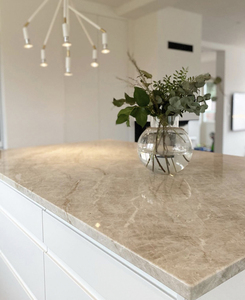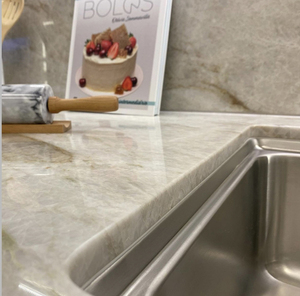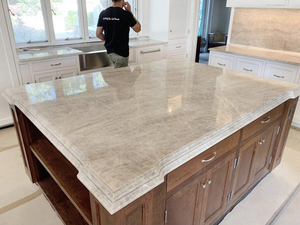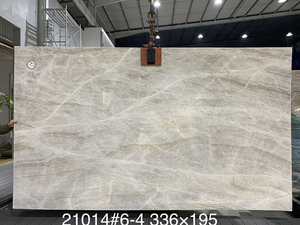
All categories
Featured selections
Trade Assurance
Buyer Central
Help Center
Get the app
Become a supplier

(8712 products available)




















































Small-size tiles are classified according to their size. The size of the tile is measured by its length and breadth in square inches or square feet. Small-size tiles are generally below 100 square feet. These include:
Small Tiles Function
Small tiles, such as mosaics, are placed close together. This makes floors and walls look very detailed and pretty. They have many colors and patterns that add beauty. Small tiles are also used to make borders with shapes that stand out.
Small Tiles Features
Small tiles have some important features. They can make spaces appear bigger by reflecting light. Small tiles are also very strong. They last a long time and are easy to clean. These tiles allow for creative designs that improve the looks of any area.
Small Size Tiles
Small size tiles, anything below 6x6 inches, are loved by designers and homeowners. These tiles allow for personalization and creativity in spaces. They give individuals control to design how they want. Small tiles also need little upkeep. They stay beautiful over time because they are easy to clean.
Small tiles are also used to cover uneven surfaces. They fit well over bumps and curves. This makes small tiles good for areas that are not smooth. Additionally, small tiles give choices of colors and patterns. There are many options to select from. This allows spaces to have colors and patterns that match what they want.
Small size tiles are highly versatile and can be applied in different ways. These applications include:
Backsplashes in kitchens
Small tiles for floors are mostly used as kitchen backsplashes. A kitchen backsplash is a wall behind sinks and countertops that protects the wall from stains and spills. Small tiles are ideal for this application since they offer simple cleaning. They also add style and color to the kitchen. The most popular small tiles for backsplashes are glass and ceramic tiles. They are available in different colors and patterns, making the kitchen attractive.
Bathrooms
Small tiles are mostly used in bathrooms. They are applied on walls, floors, and even showers. This is because most of them are waterproof. They also withstand high humidity. Additionally, they have a high cleaning ability and are anti-slip. Small tiles like porcelain and mosaic tiles are ideal for this application. They make the bathroom look classy and elegant.
Accent walls
Small tiles are also used to create accent walls. These are walls that have different colors, patterns, or textures from the surrounding walls. They are used to add visual interest in a room. Small tiles are ideal for this application because they come in different sizes, textures, colors, and designs. Metallic, glass, or mosaic tiles create stunning accent walls.
Outdoor patios and walkways
Small tiles are used to create outdoor patios and walkways. They are ideal for this application because they are long-lasting and waterproof. Additionally, they are not affected by different weather conditions. Porcelain and quarry tiles are the best options for this application.
Fireplaces
Small tiles like ceramic and mosaic are applied to fireplaces. They offer a decorative look to the fireplace. They also come in different colors, shapes, and textures, allowing homeowners to use their creativity.
Artwork and mirrors
Small tiles can be used to frame mirrors and artworks. This allows individuals to create a unique and personalized frame. Small tiles like ceramic and mosaic are ideal for this application.
When choosing the small-sized tiles, considering the technical details and design is very important. This is because these details will ensure the small-sized tiles meet the buyer’s needs. Below is a comprehensive guide that will help the business buyer make an informed decision.
Material
Small-sized tiles are made from different materials, and each has its unique characteristics. Knowing the material will help the buyer choose the right small-sized tiles. For instance, porcelain and ceramic are great for small-sized indoor and outdoor decorative tiles. They are also suitable for areas with high foot traffic. Additionally, they are waterproof and have great patterns and colors. The glass tiles are used for small decorative mosaics. They are also loved for their light and color. Moreover, they come in different shapes and sizes. The metal small-sized tiles are mostly used for backsplashes and accent walls. They are durable and add a modern touch. Lastly, the natural stone tiles, such as marble, granite, and slate, are used for luxurious and high-end applications. They have a natural beauty and are available in different sizes and shapes.
Tile finish
Tile finish plays an important role in the aesthetics and functionality of the small-sized tiles. Buyers should choose the right finish to ensure the small-sized tiles complement the space design. Matte finish is a non-reflective and flat surface finish. It is popular because it is easy to clean. Additionally, it is great for high-traffic areas and spaces with high moisture. Glossy or shiny finish is highly reflective and smooth. It brightens up a space and is used in areas where a dramatic effect is desired. Textured finish, on the other hand, features a three-dimensional feel. It adds depth and interest to the space. This finish is great for small-sized decorative tiles.
Tile color and pattern
When it comes to choosing the right color and pattern of the small-sized tiles, it should be based on the overall design and style of the space. The color and pattern play an important role in the aesthetics. For example, light-colored tiles reflect more light. They also create an airy and spacious feel. On the flip side, dark-colored small-sized tiles add warmth and sophistication. They also create a dramatic contrast. In terms of patterns, solid colors offer a clean and modern look. On the other hand, geometric and mosaic patterns add visual interest and playfulness.
Q1: Are small-sized tiles more difficult to install than larger tiles?
A1: Not necessarily. Although small-sized tiles require more individual pieces to be placed on the floor or wall, they can be installed as easily as larger tiles. This is because small-sized tiles offer more design flexibility and allow for more precise adjustments in intricate layouts.
Q2: Can small-sized tiles be used for outdoor spaces?
A2: Yes, small-sized tiles can be used for outdoor spaces. However, it is important to select tiles that are durable and have a non-slip surface, such as porcelain tiles or mosaic tiles. These tiles are able to withstand harsh weather conditions and provide safety on slippery surfaces.
Q3: How can one grout small-sized tiles without making a mess?
A3: To grout small-sized tiles without making a mess, one should use a grout bag or grout float to apply the grout in between the tiles. It is also important to use grout spacers to maintain consistent grout lines and to promptly remove any excess grout from the tile surface using a damp sponge.
Q4: Do small-sized tiles require more grout than larger tiles?
A4: Not necessarily. The amount of grout required depends on the size of the grout joints rather than the size of the tiles. Small-sized tiles can have either small or large grout joints depending on the installation technique used.
Q5: What are the maintenance requirements for small-sized tiles?
A5: The maintenance requirements for small-sized tiles depend on the type of material used. Porcelain tiles require low maintenance and can be cleaned with water and mild detergent. Mosaic tiles may require more maintenance to prevent mold growth in the grout lines and should be cleaned regularly with grout cleaner.